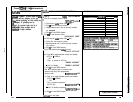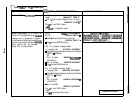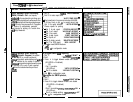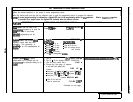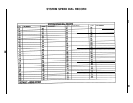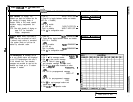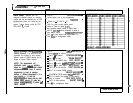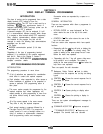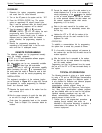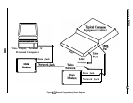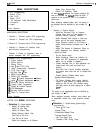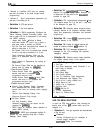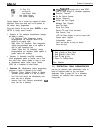
IMl66-083
System Programming j
SECTION 3
VIDEO DISPLAY TERMINAL PROGRAMMING
INTRODUCTION
The class of service can be programmed from a video
display terminal (VDT) instead of from the
programming station. The VDT that is used must be a
serial-data,
W-232
type, asynchronous device. A
keyboard send/receive (KSR) hard-copy printer can be
used instead of a VDT if preferred.
A personal computer (PC) can be employed if it will
run a communications software program which allows
it to emulate a data terminal device (DTE equipment).
Many effective communications software programs
are available for this purpose. Any that can be
arranged to match the following data communications
parameters can be used:
-
Full Duplex
-
XMODEM communication protocol (8 bit data
required)
Regardless of the type of programming terminal
employed, it is connected to the common equipment
data port A. Refer to the Chapter 3, Section 2
paragraph tiled,
DATA DEVICE
CONNECTlONSfor
complete connection details.
VDT PROGRAMMING PROCEDURE
INTRODUCTION
The programming procedure is menu driven.
A list of selections are presented for consideration
which differ in content and required response.
Each selection, when responded to, either causes a
further breakdown of selections to be presented or
causes a particular COS programming action to
take place.
This menu system prompts the programmer for the
required response and, where appropriate, will
repeat prompts to allow programming of more than
one device without having to make another menu
selection.
All of the menus operate in the same manner.
They differ in only the required response.
Each prompt requires a response followed by a
Carriage Return (RETURN). The responses
usually consist of a one or two-digit number or a
string of numbers or alpha-numeric characters
when programming names and messages.
Successive entries are separated by a space or a
comma.
GENERAL INFORMATION
There are two responses which allow a programmer to
quit a procedure.
l
RETURN (ENTER on some keyboards)
-
This
action returns the user to the top of the current
menu.
l
CONTROL C
-
This action returns the user to the
top of the main menu.
There are certain other responses which have special
functions.
l
Responding with the
@
key will print or display the
menu that the programmer is currently using. The
system is waiting at the same prompt line as it was
before the menu was repeated.
l
Responding with the ? key will cause a help menu
to be printed if one is available. The system is
waiting at the same prompt line as
tt
was before the
help menu was requested.
There are special line edit characters.
Backspace, Delete, Rub-out
-
Used to delete
characters from the response line as they are being
typed.
CONTROL
R
-
Causes the current response line to’
be echoed for review.
CONTROL D
-
Causes the current response line to
be deleted.
CONTROL S
-
Causes printing or display action
stop.
CONTROL
Q
-
Causes the printing or display to
resume.
There are two system acknowledgement messages to
a response line.
COMMAND ACCEPTED
-
Response accepted.
***COMMAND REJECTED**’
-
Response not
accepted. The terminal bells also sounded.



